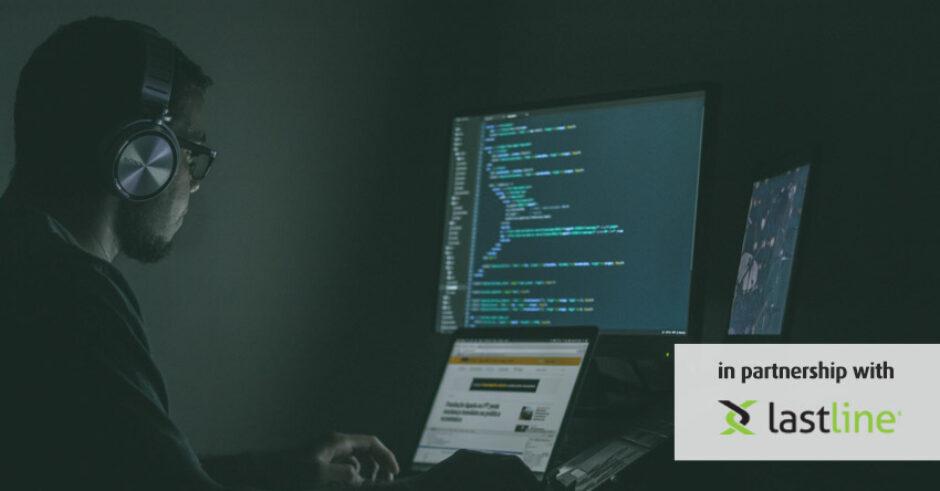Lastline is the undisputed leader in network threat detection; a title we earned by leveraging Artificial Intelligence (AI) and informed Machine Learning (ML) tools to drive high-fidelity breach detection and rapid response. Everyone is under attack and when prevention ultimately fails, and it always does, threats hide in plain sight for long periods of time damaging individuals, companies and governments without discrimination. Breaches quite regularly destroy careers too as I described in my BetaNews article “C-suite in the hot seat.”
The bad guys are overwhelming the good guys in sheer numbers. Cyber defense more and more often now imitates hand-to-hand combat! While our detection capabilities dramatically improve a customer’s security posture, the “automatic” nature of the Lastline’s AI-powered detection and its ability to make more productive a customer’s Security Operations Center (SOC) more productive absolutely wins the day.
We’re in An Epic War
By some estimates, there are more than 1,000 or so vendors hawking security products today. Yet, Lastline still gets 1,500 new sales inquiries a month – clearly the search for solutions continues. This situation makes you stop and wonder. If this many people are trying to defend against cybercrimes, how many people are actually perpetrating them? How big a foe are we fighting?
There have been several estimates to determine the size of this hacker army. One approach has been to reverse engineer how many hackers it might take to reap such daily havoc. There are 250,000 unique pieces of malware born every day. There are 300,000 global enterprise incidents registered with the FBI annually; 56% of all email is malicious and nearly 25% of all Internet traffic is now malicious. No matter how you attribute all of these efforts, there are conservatively 2-3 million hackers in the world today.
To put that number in perspective, today’s hacker army is larger than the total population of every US Computer Science graduate for the past 25 years! So, if you feel exhausted, overwhelmed or frustrated from this problem, it’s to be expected. You’re battling an army of driven, creative intellectuals every single day that’s larger than the ranks of every army on earth.
The Spoils of War are High
And, things are only going to get worse for one very simple reason. Cybercrime is a crime that pays well. Cyber criminals — by even the most conservative estimates hauled in more than $1.5 trillion in loot in 2018 or approximately $150,000 per hacker.
By comparison, the average household income in the U.S. in 2018 was $59,000. In most of Asia, annual household income wobbled around $10,000 per year and in Eastern Europe it was a paltry $6,300 per year.
Computer crime is relatively high-paying work…and if you’re a wanna-be hacker who is worried about going to jail, you can rest easily. In fact, there are less than 200 people in the U.S. today who have been caught, convicted and are currently incarcerated for cybercrimes.
Compare this to other criminal activities. In the U.S. alone there are nearly 7 million people today that are either in jail on probation or on parole. The average burglary in the U.S. is for less than $2,500; there is a 25% chance that you’ll be caught and with more than 300 million guns in the hands of US citizens, a U.S. Burglary can be rather dangerous.
By comparison, cyber criminals enjoy high pay, flexible hours, work from home, name their own hours, and they get to be their own boss. And, their chance of being caught and convicted is about the same as their chance of getting struck by lightning.
If you have any questions about whether or not the ranks of cyber criminals will grow in the coming years? Put it out of your mind. Of course, their ranks will grow – spectacularly so.
Winning the War
So, how do you win the war when you’re outnumbered and outgunned? Lastline’s AI and automation should be your secret weapons. More than 20 million users across the globe turn to our AI-powered solutions for protection from cyberthreats with impressive results like those at Aflac and Belcan. For example, Aflac’s Benjamin Harbin refers to Lastline as its “Tier One Security Operations”, a largely automated solution that reduces 50 billion alerts each month down to about 30 incident response tickets. Similarly, Matt King at Belcan notes that he has a team of just 11 people supporting a 10,000-person organization worldwide. These are brilliant and resourceful security professionals, but they are also trailblazers.
Many companies are now experimenting with AI. Yet, still, there exists a plethora of fantastical narratives about AI including dystopian views, neural singularities, and other gloomy outlooks that AI will destroy jobs in the robust knowledge economy.
Let’s put things in perspective.
Today, in the US alone, there are more than 300,000 full-time security positions that have gone unfilled. Leveraging AI to improve the efficiency and effectiveness of our SOC knowledge workers just makes good sense.
As trailblazers like Aflac and Belcan have readily shown, Lastline and other AI security tools can be an integral component of this giant leap forward.
The Business Transformation Network has posted this article in partnership with Lastline.



